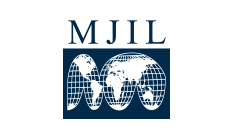Abstract
This article recasts the debates over access to, and control over, genetic and biological knowledge and resources in terms of the appropriation of indigenous and local communities' knowledge and resources. It first discusses recent examples of appropriation as currently conducted by global biotechnology, pharmaceutical, and agribusiness corporations and their associates in Northern universities, seed and gene banks, and research centers. Second, it describes and exposes the mechanisms of appropriation by focusing on the limited and culturally determined definitions of what is "wild" as opposed to "cultivated," what is "knowledge" and who can possess it, and what are "innovations" and "inventions." Included in this discussion is an examination of how the "common heritage" principle fosters appropriation through its application in seed banks, gene banks, and other ex situ forms of conservation of genetic material.
Recommended Citation
Naomi Roht-Arriaza,
Of Seeds and Shamans: The Appropriation of the Scientific and Technical Knowledge of Indigenous and Local Communities,
17
Mich. J. Int'l L.
919
(1996).
Available at:
https://repository.law.umich.edu/mjil/vol17/iss4/2
Included in
Agriculture Law Commons, Indigenous, Indian, and Aboriginal Law Commons, Intellectual Property Law Commons, Law and Society Commons

